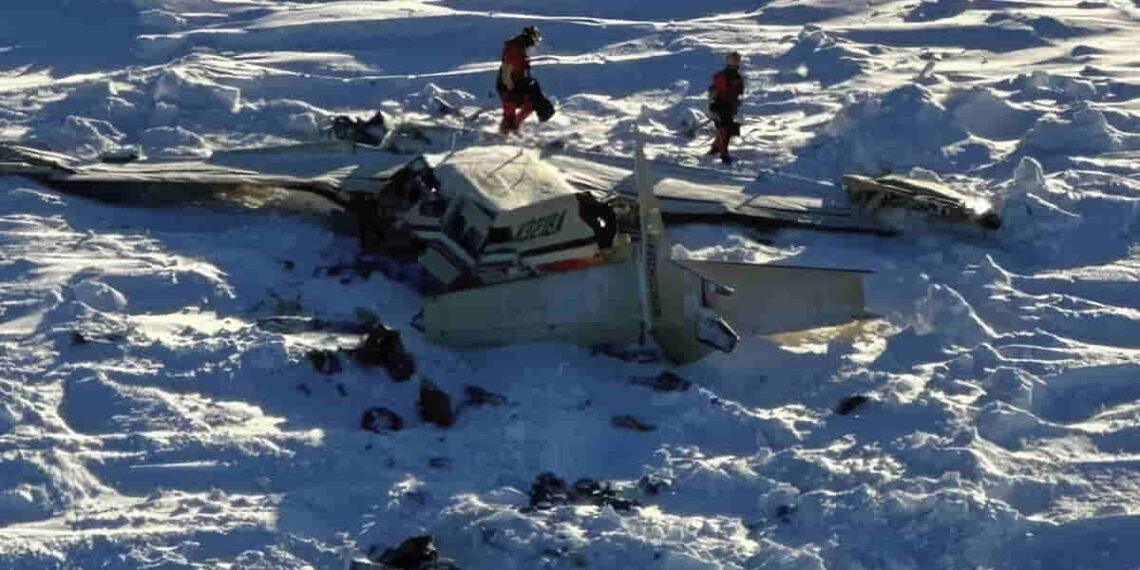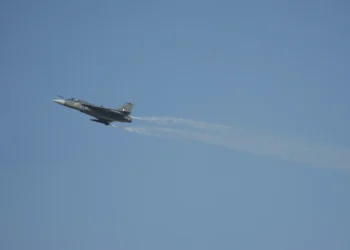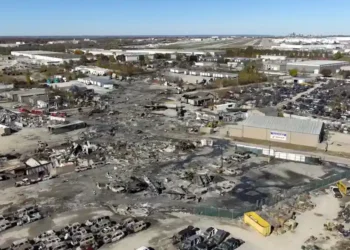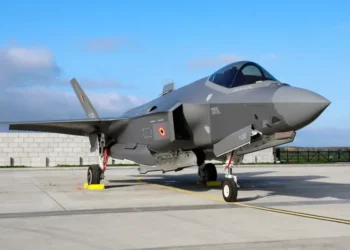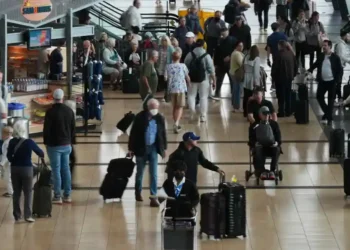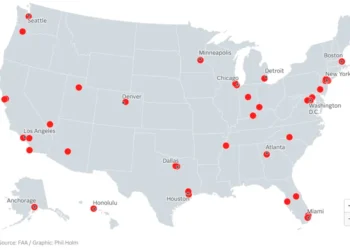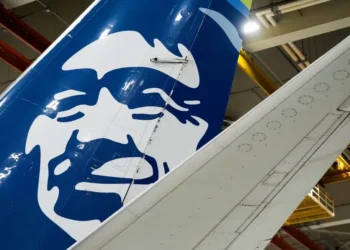Commuter Plane Crash in Alaska Leaves 10 Dead; Wreckage Found on Sea Ice
A small commuter plane crashed in western Alaska on its way to Nome, killing all 10 people aboard. The wreckage was discovered Friday on sea ice, making it one of the deadliest crashes in Alaska in the past 25 years.
Crash Details and Recovery Efforts
The plane, a Bering Air single-engine turboprop, was traveling from Unalakleet with nine passengers and a pilot when it went missing Thursday afternoon. The flight lost contact with air traffic control less than an hour after departure, with weather conditions at the time including light snow, fog, and temperatures around 17°F (-8.3°C). The plane was about 30 miles southeast of Nome when it vanished.
Rescue efforts began almost immediately, with the U.S. Coast Guard searching the plane’s last known location by helicopter. The wreckage was eventually located, and two rescue swimmers were lowered to investigate the scene. Photos from the Coast Guard showed the plane’s shattered fuselage and debris scattered across the sea ice, with rescue personnel at the site.
Alaska’s Leaders Respond
U.S. Senator Lisa Murkowski expressed her grief, saying, “It’s hard to accept the reality of our loss.” Nome’s Mayor John Handeland was emotional as he spoke about the impact on the community: “Nome is a strong community, and in challenging times we come together and support each other,” he said, vowing that the community’s support would continue in the coming days.
A prayer service was scheduled later that evening, and local leaders were already shifting focus to recovery efforts, despite worsening weather conditions. The area was facing rapidly changing weather, with more snow expected and unstable “young ice” that was slushy and not stable enough to support heavy operations.
Flight Details and Investigation
The plane, a Cessna Caravan, was operating at full capacity when it departed Unalakleet at 2:37 p.m. local time. The Coast Guard’s forensic radar data revealed that at approximately 3:18 p.m., the plane experienced a rapid loss of speed and altitude, but the cause of the event remains unclear. Lt. Cmdr. Benjamin McIntyre-Coble of the Coast Guard noted that no distress signals were received from the plane, despite the aircraft being equipped with an emergency locator transmitter, which would have sent a distress signal if exposed to seawater.
Authorities later confirmed that all passengers on board were adults, with two individuals traveling for a nonprofit tribal health organization. The identities of the other passengers have not yet been released.
Search and Rescue Operations
Local, state, and federal agencies quickly mobilized to assist in the search. Teams combed through the ice-dotted waters and vast stretches of frozen tundra in an effort to locate the plane and recover the bodies. The National Transportation Safety Board (NTSB) also sent a team of nine investigators to the site to begin the process of determining the crash’s cause.
Alaska’s Dependence on Air Travel
Flying is an essential mode of transportation in Alaska, where vast distances and limited infrastructure make travel by small plane commonplace. Many remote communities, including Unalakleet and Nome, rely on air service for everything from medical emergencies to daily supplies and school sporting events. Bering Air, the airline involved in the crash, serves 32 villages in western Alaska, providing regular flights to and from Nome, Kotzebue, and Unalakleet.
Recent Aviation Mishaps in the U.S.
This crash is the third major U.S. aviation disaster in just eight days. On January 29, a commercial jetliner collided with an Army helicopter near Washington, D.C., killing 67 people. Just two days later, a medical transport plane crashed in Philadelphia, claiming the lives of six people on board and one on the ground.
A Community Grieves and Honors the Lost
Nome, a town known for its role in the Gold Rush and as the finish line of the Iditarod sled dog race, has been shaken by the tragedy. Local officials announced that prayer vigils would be held Friday evening for the victims, their families, and the search and rescue teams involved in the operation.
As recovery efforts continue in the harsh Alaskan environment, the focus will remain on bringing closure to the families affected by this devastating crash.
This article was rewritten by JournosNews.com based on verified reporting from trusted sources. The content has been independently reviewed, fact-checked, and edited for accuracy, neutrality, tone, and global readability in accordance with Google News and AdSense standards.
All opinions, quotes, or statements from contributors, experts, or sourced organizations do not necessarily reflect the views of JournosNews.com. JournosNews.com maintains full editorial independence from any external funders, sponsors, or organizations.
Stay informed with JournosNews.com — your trusted source for verified global reporting and in-depth analysis. Follow us on Google News, BlueSky, and X for real-time updates.
